Are you tired of dealing with that persistent pain shooting down your leg? Well, you’ve come to the right place. In this article, we’ll explore five powerful solutions that will help you bid farewell to sciatica pain and reclaim your life. So, let’s dive in!
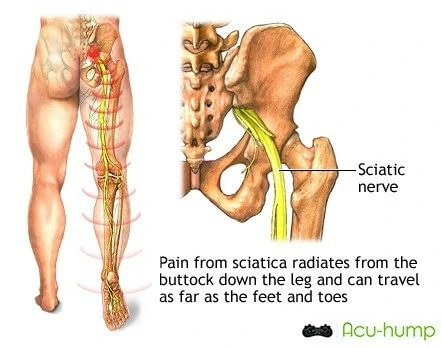
Impact from lower back, glutes and hamstrings
What is sciatica
It is a condition that causes pain, numbness, or tingling sensation originating in the lower back and radiating down through the buttocks, back of the thigh, and sometimes even as far as the lower leg or foot. It occurs when the sciatic nerve, which is the largest nerve in the body, becomes compressed or irritated. This nerve runs from the lower back, through the buttocks, and down each leg, providing sensation and motor control to the corresponding areas.
What causes this disease
There are several factors that can contribute to the development. The most common cause is a herniated or slipped disc in the spine. When a disc, which serves as a cushion between the vertebrae, becomes displaced, it can put pressure on the surrounding nerves, including the sciatic nerve. Other causes include spinal stenosis, which is the narrowing of the spinal canal, and spondylolisthesis, a condition where one vertebra slips forward over another.
Additionally, muscle imbalances, such as weakness piriformis muscles or tightness QL muscles, can also contribute to sciatica. Poor posture, sedentary lifestyle, obesity, and even pregnancy can increase the risk of developing this condition.
What are the sciatica signs
It can manifest differently for each individual, but common symptoms include sharp or shooting pain, burning or tingling sensation, weakness, and difficulty in moving the affected leg or foot. Activities like sitting, standing, walking, or even coughing and sneezing can aggravate the symptoms, making even the simplest tasks challenging and frustrating.
It’s important to understand the causes and signs in order to seek appropriate treatment and management strategies. With the right approach, including stretches, exercises, lifestyle modifications, and possibly the use of supportive tools like the Acu-hump, individuals suffering from sciatica can find relief and regain their quality of life.
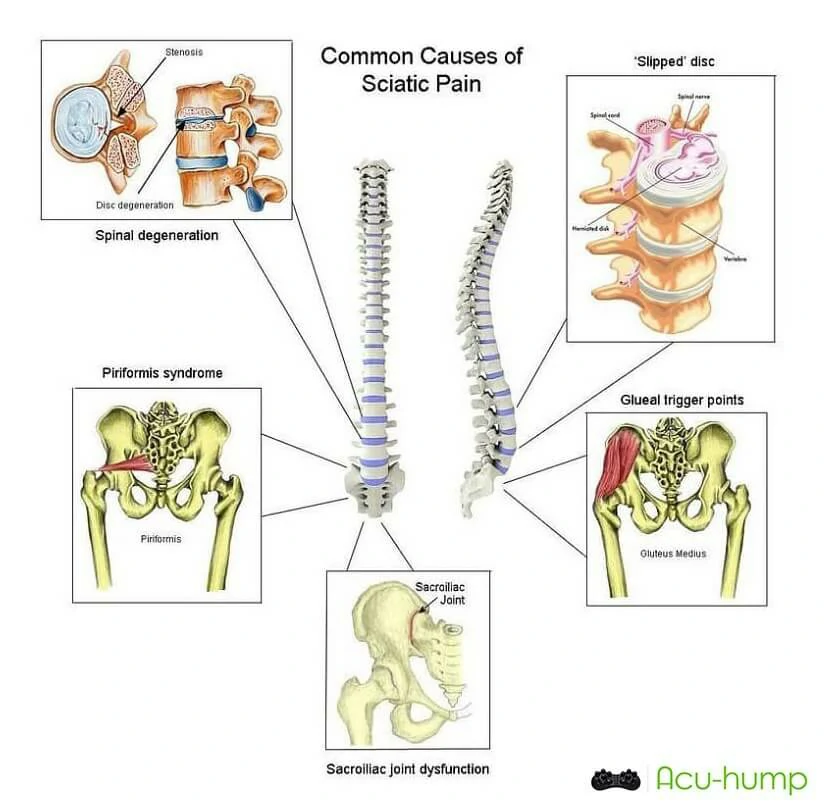
Stretching Exercises Help Sciatica
When it comes to finding relief from sciatic nerve pain, stretching exercises can become your secret weapon. Stretching can help sciatica, reduce muscle tightness, and improve flexibility, ultimately providing significant relief from discomfort.
The following stretch is along the sciatic nerve’s beginning – the lower back, through the buttocks, and to the base of the thigh. It aims to relieve sciatic nerve pain by relaxing the key joints and muscles that may compress the sciatic nerve and cause pain.
1. Knee-to-Chest Stretch
Lie on your back with your legs straight. Slowly bring one knee towards your chest, grasping behind the thigh. Hold for 30 seconds, feeling the stretch in your lower back and buttocks. Repeat with the other leg.
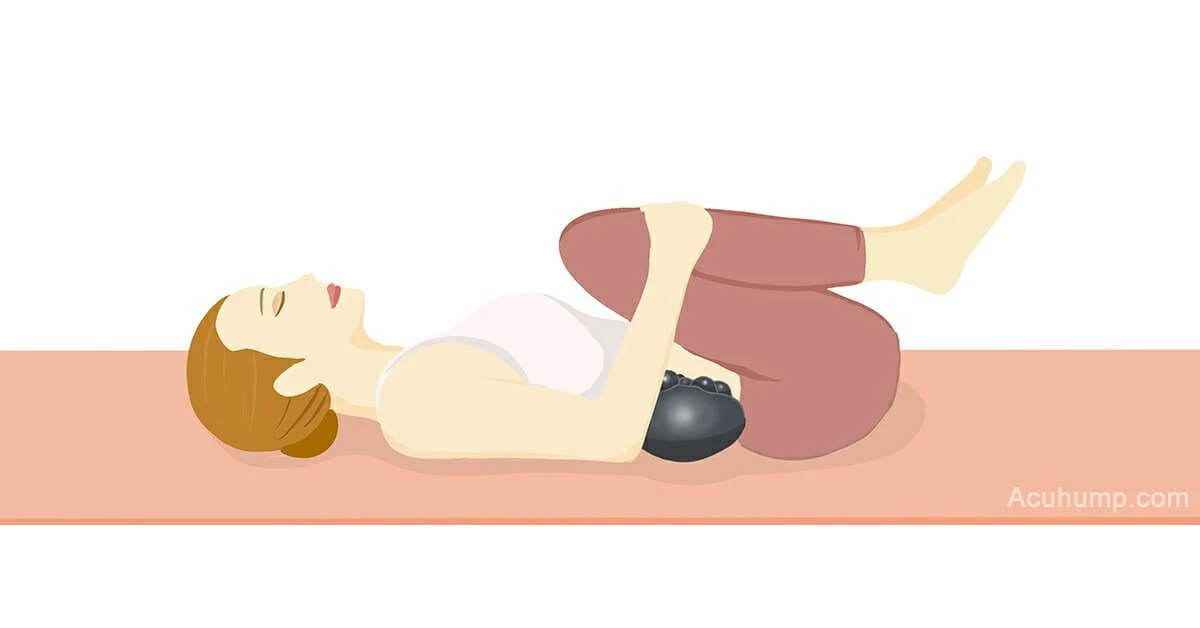
2. Piriformis Stretch
Lie on your back with both knees bent. Place the ankle of the affected leg on top of the opposite knee. Then, gently pull the unaffected leg towards your chest, feeling a stretch in the buttock of the crossed leg. Hold for 30 seconds and repeat on the other side.
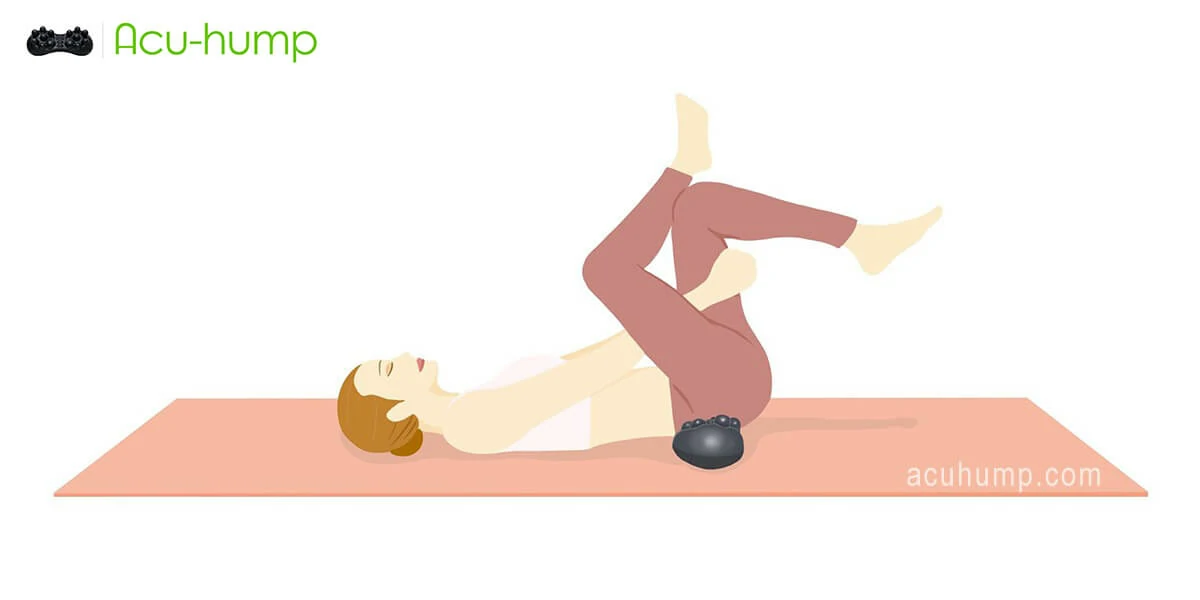
3. Hamstring Stretch
Sit on the edge of a chair or on the floor with one leg extended straight in front of you. Gently lean forward, reaching for your toes while keeping your back straight. Hold the stretch for about 30 seconds on each leg, feeling a gentle pull along the back of your thigh.
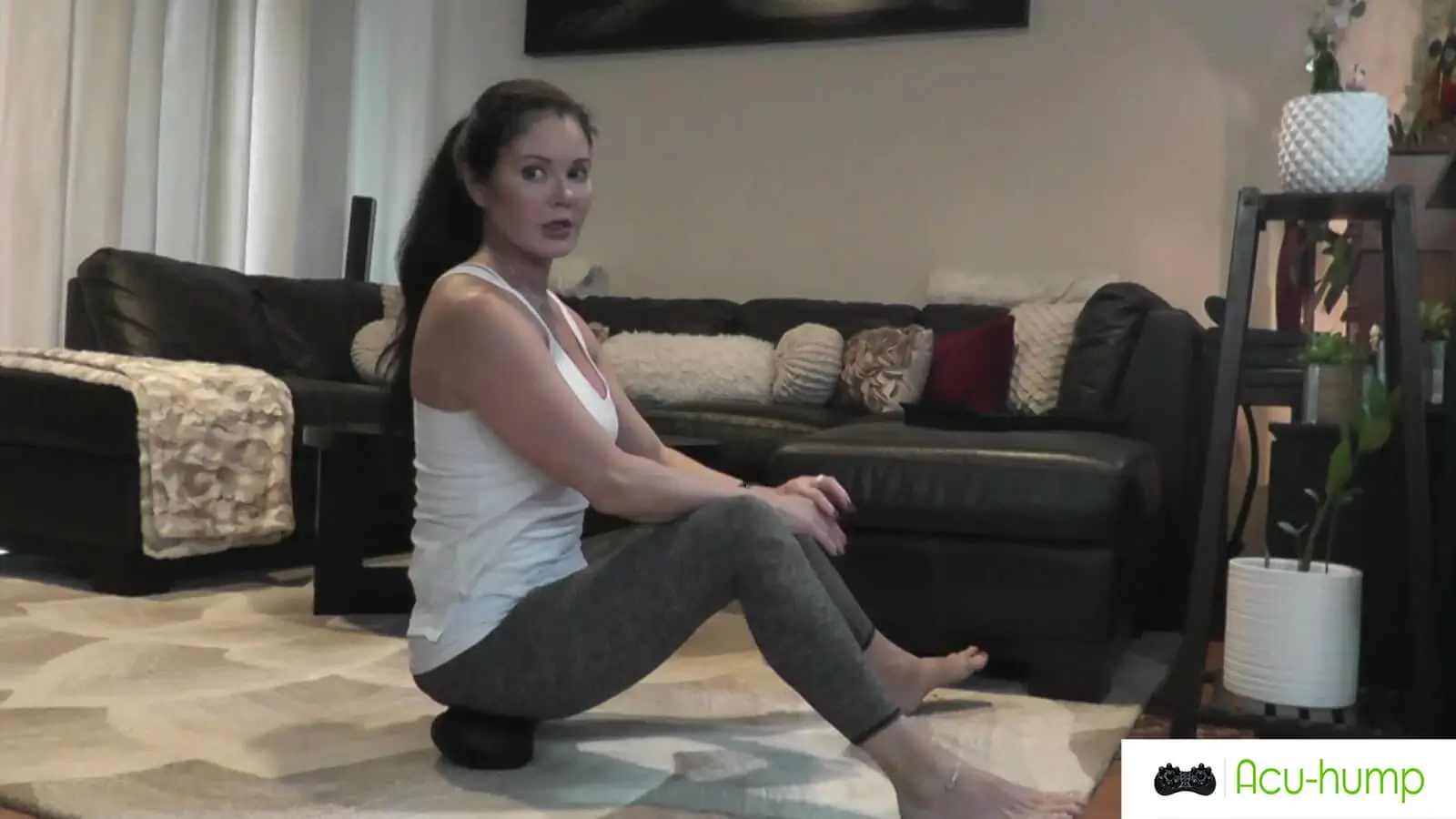
Incorporating these stretching exercises into your daily routine can gradually alleviate pain, enhance mobility, and improve flexibility. Combine these stretches with other recommended treatment options for a holistic approach to managing discomfort. And don’t forget to consider the use of supportive tools like the Acu-hump to enhance the effects of stretching and helping sciatica.
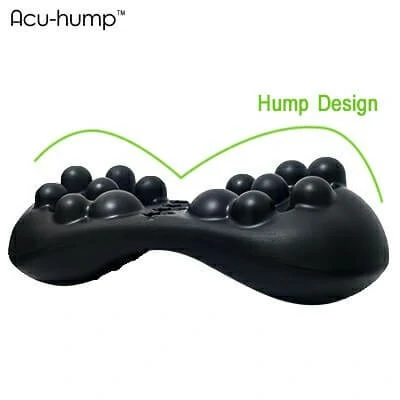
Bring more oxygen and nutrients to your muscle
Lifestyle Modifications to Help Sciatica
When it comes to managing sciatic nerve pain, making lifestyle modifications can have a significant impact on your overall well-being and help sciatica. By implementing simple yet effective changes, you can support your body’s healing process and reduce the frequency and intensity of symptoms. Let’s explore some of these lifestyle modifications:
1. Optimizing Your Workspace
If you have a sedentary job, it’s important to ensure that your workspace is ergonomically friendly. Invest in an ergonomic chair that provides proper lumbar support and promotes good posture. Use a desk or workstation that allows you to maintain an upright position and avoid slouching, which can increase stress on your lower back.
2. Tailoring Exercise Routine
Engaging in regular exercise can be immensely beneficial for managing sciatica pain. However, it’s crucial to choose exercises that are gentle on your back and target the affected areas. Low-impact exercises such as swimming, cycling, and walking can help strengthen the supporting muscles and improve flexibility without placing excessive strain on your back.
3. Dietary Tweaks and Supplements
Certain dietary tweaks and supplements can aid in reducing inflammation and supporting the healing process. Incorporate anti-inflammatory foods into your diet, such as fatty fish, leafy greens, turmeric, and ginger. Additionally, supplements like omega-3 fatty acids, vitamin D, and magnesium may provide added support in managing sciatica symptoms. It’s best to consult with a healthcare professional or nutritionist before starting any supplements.
4. Stress Management Techniques
Stress can exacerbate pain and make sciatica symptoms worse. Incorporate stress management techniques into your daily routine to promote relaxation and reduce tension. Practices such as yoga, meditation, deep breathing exercises, and engaging in hobbies or activities that bring you joy can all help alleviate stress and enhance overall well-being.
By implementing these lifestyle modifications, you can provide your body with the necessary support for managing sciatica pain. Remember, consistency is key, so aim to make these changes a part of your daily routine. Every small step you take towards prioritizing your well-being can contribute to a significant reduction in sciatica symptoms and improve your overall quality of life.
Alternative Therapies Help for Sciatica Relief
When it comes to finding relief, conventional treatments are not your only options. Alternative therapies have shown promising results in helping sciatica discomfort and can be worth exploring. Let’s delve into some of these innovative approaches:
1. Acupuncture therapy for sciatica
These ancient practices from traditional Chinese medicine involve stimulating specific points on the body to promote energy flow and help sciatica. Acupuncture uses thin needles, while acupressure applies pressure to these points. Both techniques can help reduce inflammation, release muscle tension, and alleviate sciatic nerve pain.
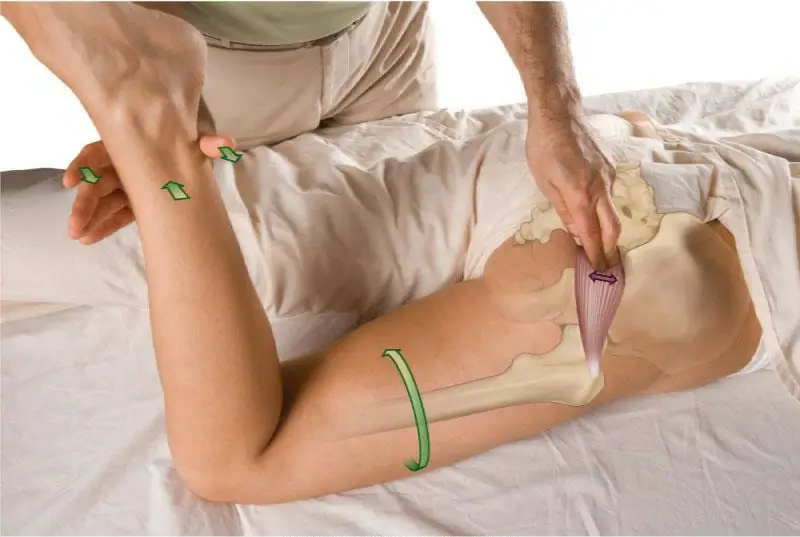
2. Chiropractic Care
Chiropractors specialize in spinal adjustments and manipulations to realign the spine, reduce nerve compression, and restore proper joint function. Through manual adjustments, they aim to relieve pressure on the sciatic nerve, providing relief from pain and promoting overall spinal health.
3. Targeted Massage Therapy
Massage therapy can be beneficial for relaxing muscles, improving circulation, and reducing tension associated with sciatica. Skilled massage therapists can target the affected areas, such as the lower back, buttocks, and legs, to release tight muscles, decrease pain, and enhance overall well-being.
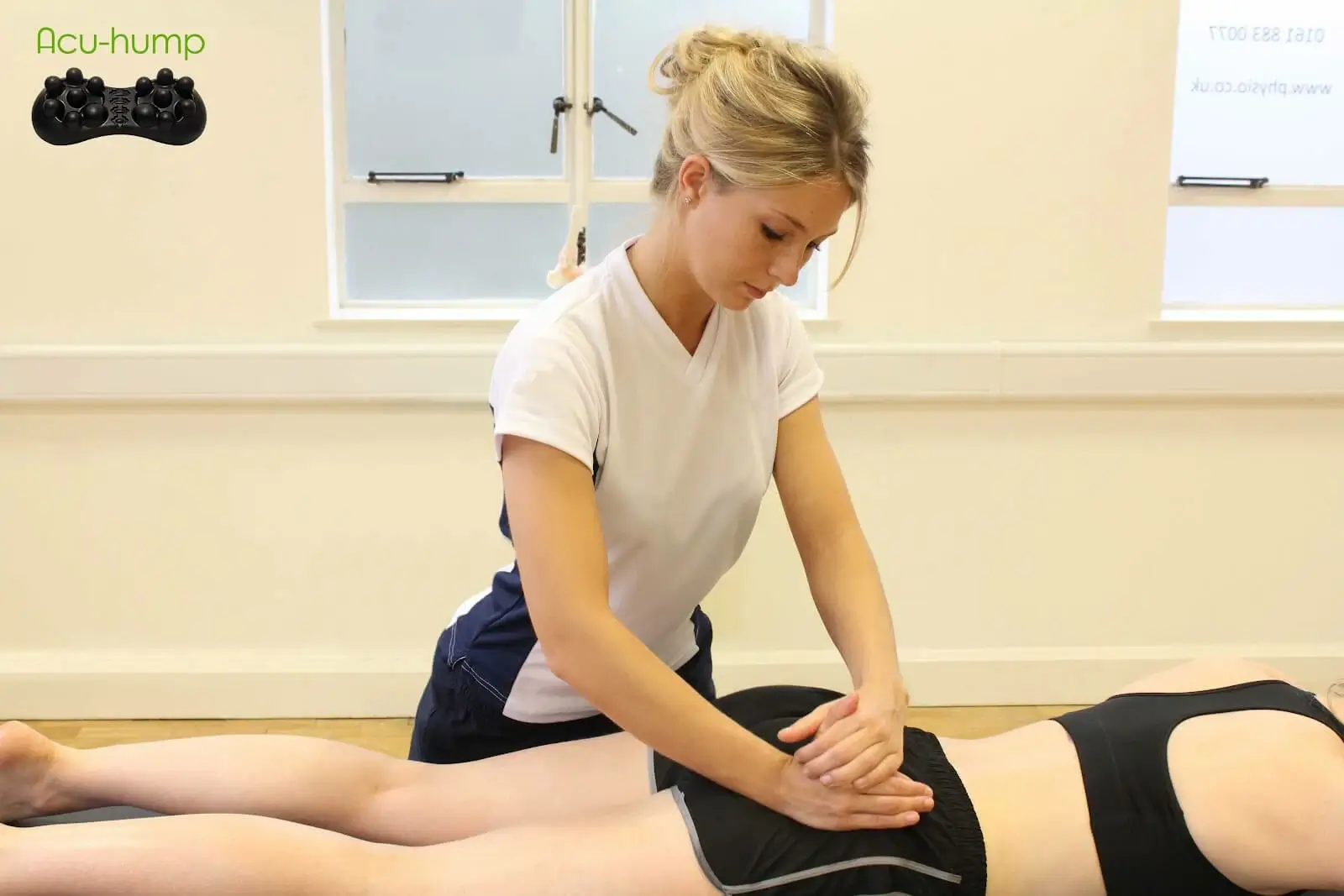
4. Acu-hump: Acupressure Massage Tool
The Acu-hump is a specially designed scaitica massage tool that can enhance the effects of stretching exercises for sciatica relief. Its unique acupressure nodes apply gentle pressure along the spine, promoting deep muscle relaxation and stimulating blood flow, which can contribute to long-term pain relief. Incorporating the Acu-hump into your stretching routine can effectively complement your efforts to manage sciatic nerve pain.
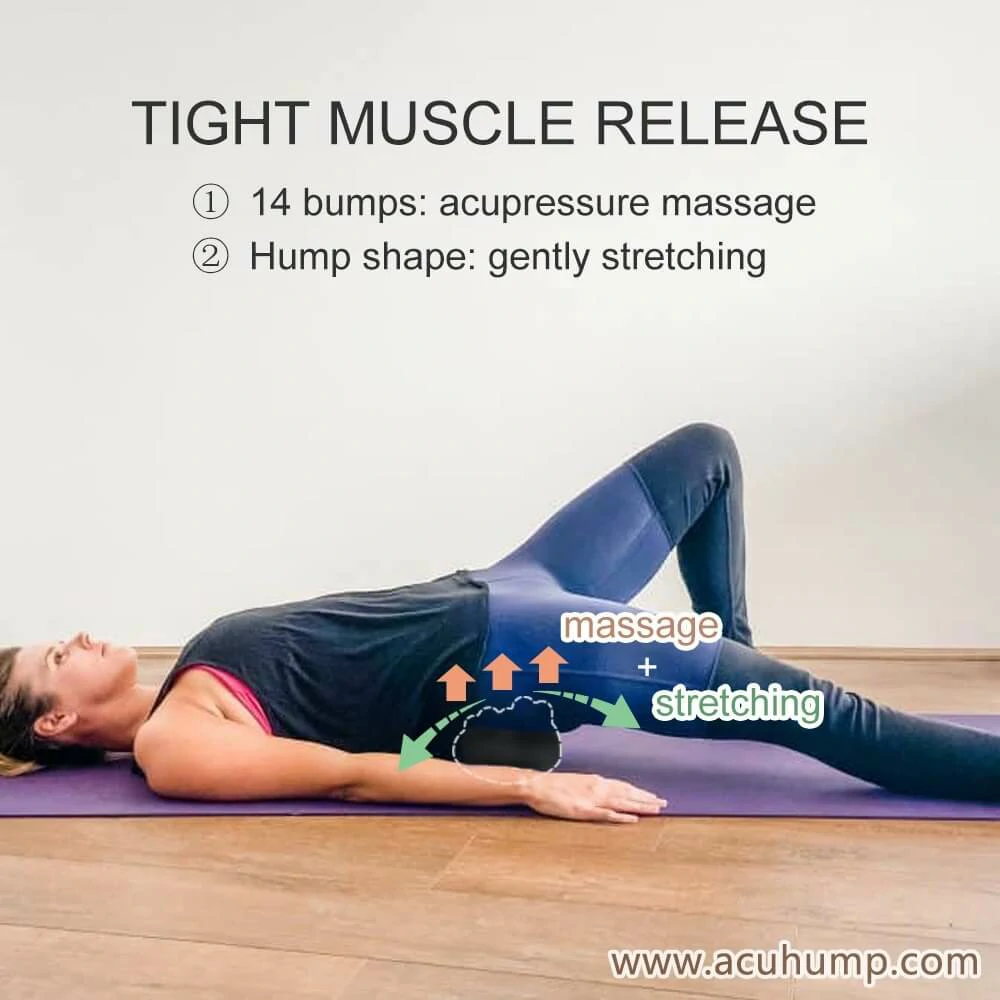
Acu-hump® Massage & Stretching for Sciatica
When exploring alternative therapies, it’s important to consult with qualified practitioners who have experience in treating sciatica. They can assess your specific condition and create a personalized treatment plan that addresses your needs. Remember, what works for one person may not work for everyone, so it’s essential to find the approach that resonates with your body and brings you relief. Embrace the possibilities of these alternative therapies and discover the potential they hold in your journey towards sciatic nerve pain relief.
Pain Management Strategies Help for Sciatic Nerve Pain
Dealing with persistent nerve pain can be challenging but fear not, for there are various pain management strategies that can provide you with relief. Let’s explore some of these strategies and empower you to take control of your pain:
1. Over-the-Counter Medications
Non-steroidal anti-inflammatory drugs (NSAIDs) such as ibuprofen or naproxen can help reduce inflammation and provide temporary relief. However, it’s important to follow the recommended dosage and consult with a healthcare professional if you have any underlying health conditions or are taking other medications.
2. Heat and Ice Therapy
Applying heat or cold to the affected area can help sciatica and reduce inflammation. Heat therapy, such as using a heating pad or taking warm showers, can soothe tense muscles and increase blood flow. Cold therapy, like using an ice pack or cold compress, can numb the area to reduce inflammation and calm nerve irritation. Experiment with both to see which works best for you.
3. Relaxation Techniques
Stress and tension can intensify sciatic never pain, so incorporating relaxation techniques into your routine can be beneficial. Techniques such as deep breathing exercises, mindfulness meditation, and progressive muscle relaxation help calm your mind, reduce muscle tension, and alleviate pain.
4. Preventing Future Flare-Ups
Prevention is key to managing discomfort in the long run. Maintaining a healthy weight, practicing good posture, incorporating regular stretching, use an Acu-hump to self massage, strengthen core muscles and maintain flexibility, and using proper body mechanics when lifting heavy objects can all help prevent future episodes of sciatic nerve pain.
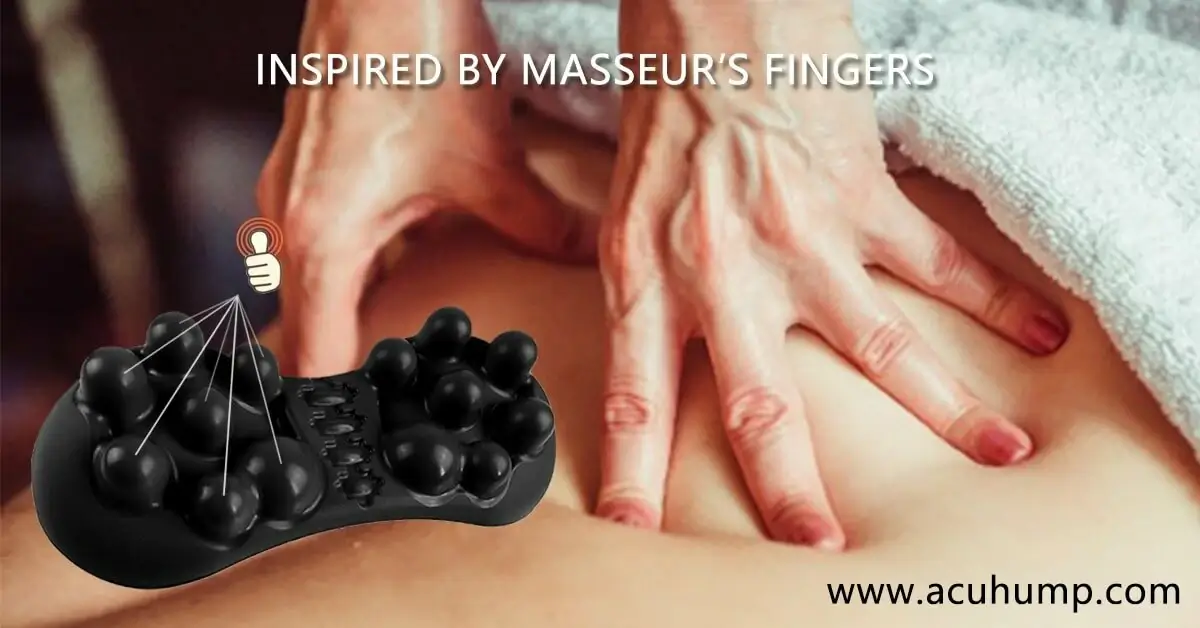
Acu-hump: 30-day return policy. No risk for you.
Remember, everyone’s experience with sciatica is unique, and what works for one person may not work for another. It’s essential to listen to your body, be patient during the healing process, and consult with a healthcare professional to determine the best pain management strategies for you.
By exploring different approaches, you can find a combination of pain management strategies that work synergistically to alleviate your discomfort. Stay proactive, be consistent with your self-care practices, and don’t hesitate to seek professional guidance along the way.
Congratulations, my friend! You’ve armed yourself with the knowledge and tools to take charge of your pain. Remember, each person’s journey is unique, so find what works best for you. Don’t hesitate to consult with a healthcare professional to personalize your treatment plan.
Together, we can say goodbye to discomfort and hello to a pain-free life. Oh, and don’t forget to check out the Acu-hump acupressure massage tool mentioned earlier – it might just be the missing piece of your discomfort relief puzzle. Cheers to your wellness!
Acu-hump: Full refund policy. No risk for you.

I deal with sciatica and back pain. I’ve used several stretching devices for my back and always wished I could use them on my lower back and hips more. So, this is perfect. The one side with larger “nubs” is a little painful if you’re sore but does work well to work out any knots or trigger points. The other side is gentler and provides a really good stretch for this area. I will continue using it to stretch and relieve tension. I can’t say it’s fixed it, but it certainly will help!

Ok, so I’ve had this thing since October. I was a little intimidated to try it. Now I’m kicking myself for staring at it for 6 months! …
You can use it while on the floor, a bed or couch depending on your preferences and the amount of stability you want or can take…
But for myself, I IMMEDIATELY felt putting it on my lower back/hip area is going to be my sweet spot! Just 20 seconds of use, I felt so much better! The tension in my lower back was released enough where I could tell right away. I can’t wait to see how good I feel when I get my time laying on it up to 10 minutes…

Acu-hump®
Release Butt & Lower Back
